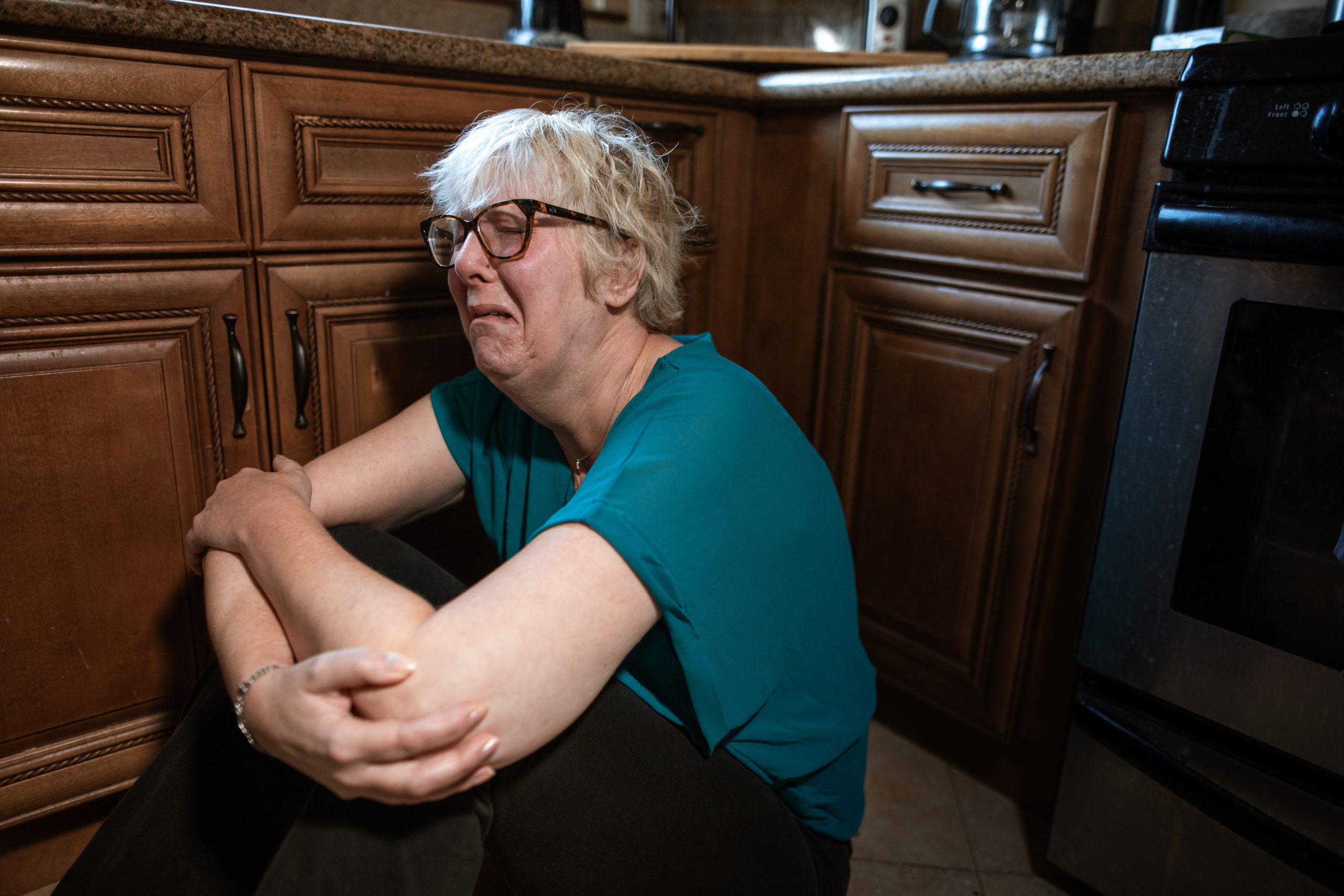Note: This article is to spread awareness and not to give medical or mental advice to anyone. It is always a good idea to seek professional help because even if you feel all these apply to your personal experience, each person is different and we are all a puzzle. Our healing begins when we understand our personal struggles and limitations then we seek what works and release what doesn’t work for us.
What is PTSD?
Post-Traumatic Stress Disorder (PTSD) is a disorder that may happen to people who witness or experience a traumatic event, series of events, or set of circumstances.
Symptoms can include intrusive thoughts, flashbacks, nightmares, and severe anxiety. PTSD can develop after any type of experience that is violent, life-threatening or harmful. These can affect the mental and physical health of an individual. Some of the most common examples of events and experiences are:
War, Domestic abuse, car accident, natural disaster, sexual assault, combat, bullying, and/or natural disasters.
The Four Main Symptoms of PTSD
The most common symptoms of PTSD fall into these four categories:
Intrusive Memories
They are unwanted and involuntary memories or images of a traumatic event that repeatedly and vividly come to mind, even when the person is not intentionally trying to think about it. These memories can be very distressing and can cause the person to experience intense emotions, such as fear, anxiety, and sadness. Intrusive memories can also be triggered by external stimuli, such as sights, sounds, smells, or even certain words or phrases. Intrusive memories can take various forms, including:
Flashbacks: A person may feel as though they are reliving the traumatic event, experiencing intense feelings of fear, helplessness, or horror.
Nightmares: A person may experience frightening or disturbing dreams related to the traumatic event.
Intrusive thoughts: A person may have persistent and distressing thoughts or images related to the traumatic event that they cannot control.
Triggers: A person may experience sudden and intense emotional reactions to certain triggers that remind them of the traumatic event.
Intrusive memories can significantly impact a person’s quality of life, causing them to avoid situations or people that remind them of the trauma, disrupting their sleep patterns, and interfering with their ability to concentrate and focus on daily tasks.

Avoidance Behaviors
They refer to a range of behaviors that a person may engage in to avoid situations, people, or activities that trigger memories or reminders of a traumatic event. Avoidance behaviors can take various forms, including:
Avoiding thoughts or feelings related to the trauma: A person may try to push away or suppress any thoughts, feelings, or memories related to the traumatic event.
Avoiding people or places that remind them of the trauma: A person may avoid going to certain places, seeing certain people, or engaging in certain activities that remind them of the traumatic event.
Numbing or dissociation: A person may try to numb their emotions or disconnect from their surroundings to avoid feeling the pain of the trauma.
Substance use: A person may use drugs or alcohol to cope with the emotional pain of the trauma.
Hyper-vigilance: A person may become overly alert and avoidant of anything that may trigger memories of the trauma.
Avoidance behaviors can interfere with a person’s ability to function in daily life, leading to social isolation, relationship problems, and difficulty at work or school. It is important for individuals experiencing avoidance behaviors to seek professional help from a mental health provider. Therapy can help individuals with PTSD develop coping strategies to manage their avoidance behaviors and improve their overall quality of life.
Negative Changes in Mood
Negative changes in mood and cognition are common symptoms of PTSD. These symptoms refer to a range of emotional and cognitive changes that occur after a person has experienced or witnessed a traumatic event.
Some examples of negative changes in mood and cognition include:
Negative thoughts and beliefs: A person with PTSD may develop negative beliefs about themselves, others, or the world around them. For example, they may believe that they are weak or that the world is a dangerous and unpredictable place.
Feelings of detachment or estrangement: A person with PTSD may feel emotionally numb or disconnected from the people and activities they used to enjoy.
Persistent feelings of fear, anger, or guilt: A person with PTSD may experience intense feelings of fear, anger, or guilt related to the traumatic event.
Loss of interest in activities: A person with PTSD may lose interest in activities they used to enjoy, such as hobbies or socializing with friends.
Difficulty experiencing positive emotions: A person with PTSD may have difficulty experiencing positive emotions, such as happiness or love.
These negative changes in mood and cognition can significantly impact a person’s quality of life, leading to problems with work, relationships, and overall well-being.
Changes in Arousal Levels
Changes in arousal levels are one of the key symptoms of PTSD, and they can manifest in several ways:
Hyperarousal (1): People with PTSD may experience a persistent state of heightened arousal, characterized by an exaggerated startle response, irritability, hypervigilance, and difficulty sleeping. They may feel constantly on edge and find it challenging to relax.
Hyperarousal (2): Some people with PTSD may experience a state of reduced arousal, where they feel emotionally numb, detached, or dissociated from their surroundings. They may feel like they are in a daze, have difficulty concentrating, and feel disconnected from their thoughts and feelings.
Changes in arousal levels can significantly impact the quality of life for people with PTSD. They can interfere with daily activities, impair social relationships, and affect mental health outcomes.
Why do Some People Develop PTSD?
Not everyone who experiences a traumatic event will develop PTSD. Although doctors aren’t sure why some people get PTSD, as with most mental health problems, the answer to this question is probably caused by a complex mix of:
-Personal factors: Individual factors such as a history of trauma, preexisting mental health conditions, or a lack of social support can increase the risk of developing PTSD.
-Stressful experiences, including the amount and severity of trauma you’ve gone through in your life
-Ongoing exposure to trauma, such as in cases of ongoing domestic violence or childhood abuse.
-Biological factors: There may be a genetic component to PTSD. Inherited mental health risks, such as a family history of anxiety and depression. Some people may be more biologically vulnerable to developing the disorder.
-Inherited features of your personality — often called your temperament.
-The way your brain regulates the chemicals and hormones your body releases in response to stress.
Why Does PTSD Have Physical Effects?
PTSD, or post-traumatic stress disorder, can have physical effects because it involves a complex interplay between psychological and physiological processes in the body. PTSD is a psychiatric disorder that can develop after a person experiences or witnesses a traumatic event, such as combat exposure, sexual assault, or a natural disaster. The trauma can trigger a wide range of psychological and emotional symptoms, such as anxiety, fear, anger, guilt, and shame, which can, in turn, affect the body’s physiological response.
Here are some ways that PTSD can have physical effects:
Altered stress response: People with PTSD may have an overactive stress response, characterized by increased levels of stress hormones, such as cortisol and adrenaline. This can lead to a range of physical symptoms, such as increased heart rate, blood pressure, and respiratory rate, as well as sweating, trembling, and digestive problems.
Sleep disturbances: Many people with PTSD struggle with sleep disturbances, such as insomnia, nightmares, and night sweats. This can lead to fatigue, irritability, and difficulty concentrating during the day.
Chronic pain: People with PTSD may experience chronic pain, such as headaches, back pain, or muscle tension, which can be linked to stress and anxiety.
Increased risk of physical health problems: Studies have found that people with PTSD may have a higher risk of developing physical health problems, such as cardiovascular disease, autoimmune disorders, and chronic pain conditions.
Overall, the physical effects of PTSD can be significant and can impact a person’s quality of life. Therefore, it’s important to seek help from mental health professionals who can provide effective treatments, such as therapy and medication, to manage the symptoms of PTSD and improve overall health outcomes.

Getting the right help and how is PTSD treated?
There is no one-size-fits-all approach to treating PTSD, as the condition can vary from person to person. However, there are a number of common treatments used to help people manage the symptoms of PTSD. Some of the most common treatments include therapy, medication, and self-care.
Therapy is often the first line of treatment for PTSD. This can involve a variety of different approaches, such as cognitive behavioral therapy (CBT), exposure therapy, and trauma-focused cognitive behavioral therapy (TF-CBT). CBT is a type of therapy that helps people learn how to change their thoughts and behaviors, while exposure therapy helps people face and cope with the memories and emotions that are associated with their trauma. TF-CBT is a type of therapy that specifically targets PTSD symptoms.
Medication may also be prescribed to help people with PTSD. This can include antidepressants, anti-anxiety medications, and sleep medications. It is important to work with a doctor to find the medication that is best for you.
Self-care is also an important part of managing PTSD. This can include things like exercise, relaxation techniques, and healthy eating. Taking care of yourself both physically and emotionally can help you manage the symptoms of PTSD.
Conclusion
PTSD is a disorder that may develop after experiencing a traumatic event or series of events. Symptoms include intrusive memories, avoidance behaviors, negative changes in mood, and changes in arousal levels. Not everyone who experiences trauma will develop PTSD, but factors such as personal and biological factors may increase the risk of developing the disorder. Seeking professional help is important for individuals experiencing symptoms of PTSD, as therapy can help them develop coping strategies to manage their symptoms and improve their quality of life.

